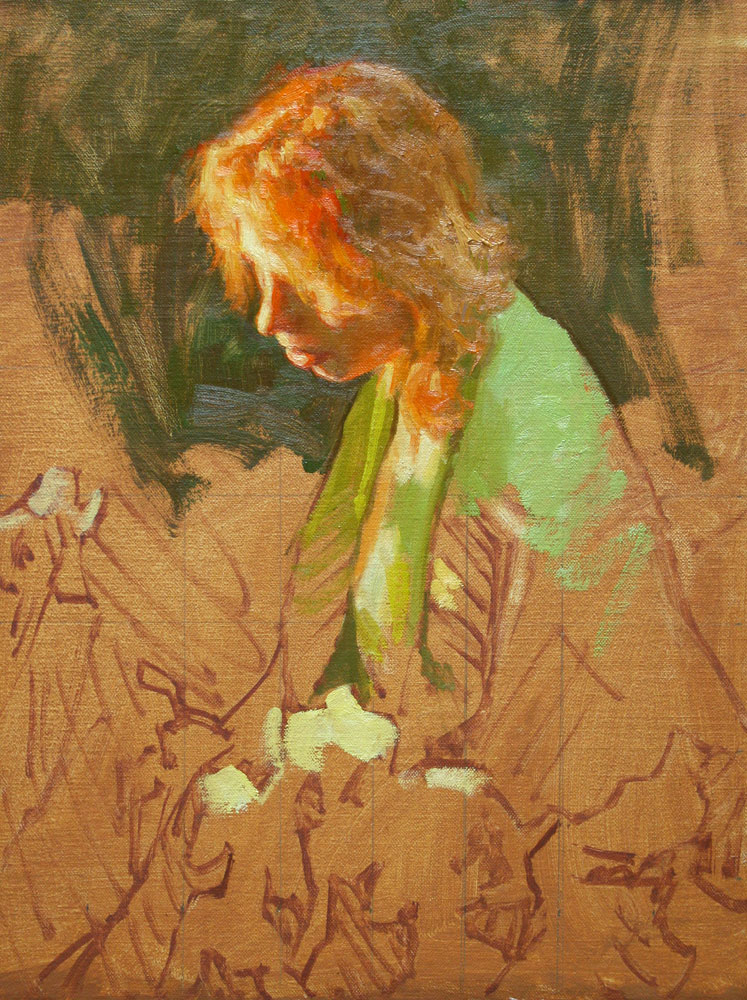After my last post about painting procrastination, I received some comments from other artists who experience similar struggles. A few mentioned the additional challenge of losing interest after spending a certain amount of time on a painting.
I can sometimes lose interest midway through a painting too. A couple of reasons seem to cause this to happen.
1. If I drag out working on the piece too long.
Spending too much time can happen with a painting of any size. Often this occurs when I end up having to fix major mistakes throughout the process due to poor planning and/or execution. Or I just need to stop being lazy and get to work!
In most cases, I can avoid this problem by spending a little more time in the planning stage, making sure I have a good design and faithfully composing the scene on my canvas. Before I start painting, I try to make sure that I don’t leave anything on the canvas that I know is incorrectly drawn.
2. If I work on the whole surface of the canvas at once (on larger paintings).
When I paint large and block in shapes all over the canvas, it takes me long enough to bring the painting to a level of finish that I have trouble getting started again after a break. I’ll return the next day and not know where to begin since the whole surface is so unfinished. Plus I prefer working wet-into-wet so I don’t like that this approach causes me to have to repaint areas that have dried in order to maintain good edge control.
A great help I’ve used to combat this problem is to start larger pieces by first finishing my center of interest before continuing outward from that point. (See this painting demonstration and this one for examples.) This method requires a high degree of accuracy from the beginning since the remainder of the painting will need to compare properly to the center of interest.
Painting this way helps me more quickly see progress. And it reminds me to compare every consecutive part of my painting back to the center of interest so that it remains the most eye-catching part of the painting. I also avoid having to repaint areas that have dried. (As long as I compare accurately from the beginning.)
Developing larger paintings in this way seems to help me maintain my enthusiasm from the first strokes to the last. Perhaps you’ll find it helpful too.

5 Responses
Nancy
Thanks for your play by play on how to tackle a canvas and keep your interest in painting without loosing interest! I like to paint big paintings 24×36 or so and use a pallet knife. The pallet knife keeps my interest most of the time. Big canvases can be a bit of a challenge though.
Rita
Great suggestions! Love the painting (“Garden”) in progress!
Ralph Serpe
I often lose interest in a painting. What I do to overcome this is to work on more than one painting at a time. If I lose interest in one, I will work on another, going back and forth. Another option is to simply take a break from painting altogether.. I will often work on something unrelated to painting and after some time I will return to painting with a fresh mind. After a break, I will also see things that I didn’t see in a previous session. This is what works for me of course. Everyone is different. Thanks for the article Dan! Really enjoying your newsletter.
Fawn Johnson
I just want you to know, it’s hard for me to be an artist, but your thoughtful observations, and chivalrous teachings eventually pull me back to painting, you are truly a renaissance man.
Dan Schultz
Thanks for the comments, everyone!